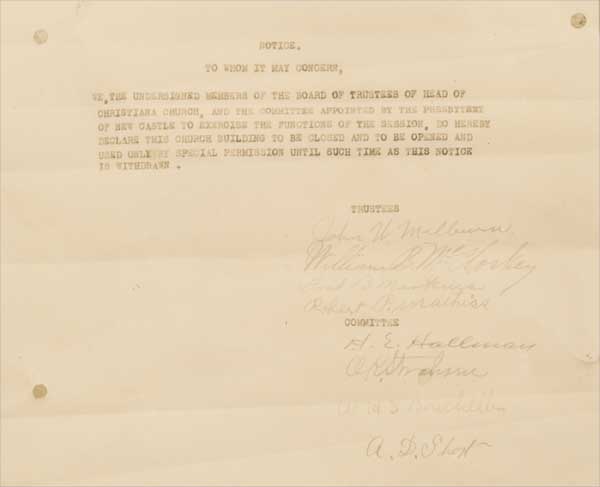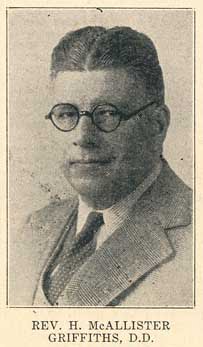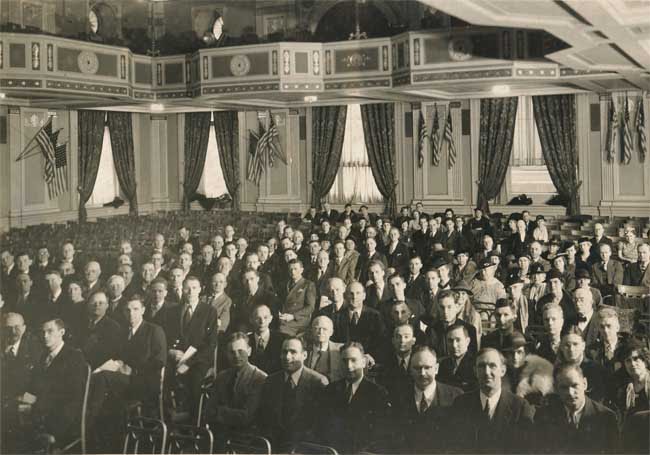What’s in a Name?
Solomon wrote once that “a good name is to be chosen rather than great riches.” (Proverbs 22:1a ESV) And while this text speaks of one’s personal name, it could also have an application to the name of a denomination. What’s in a name, after all? That question was the issue in February, 1939 when the Presbyterian Church of America had to be renamed, just two and one half years after taking it up in 1936.
The Presbyterian Church in the U.S.A. had taken the young denomination to court over the issue of its chosen name. That whole scene will be dealt with in a future historical devotional on April 28. When the PCUSA won the court case, the General Assembly of the PCofA decided not to contest the lower court decision. Calling a special meeting in the month of February, the question was simple. What do we call ourselves now?
Many names were suggested by the teaching and ruling elders. Some of them were: Evangelical Presbyterian Church, Presbyterian and Reformed Church of America, North America Presbyterian Church, Presbyterian Church of Christ, Protestant Presbyterian Church of America, Seceding Presbyterian Church of America, and this contributor’s favorite, Free Presbyterian Church of the World! Oh yes, one other name was also suggested. It was the Orthodox Presbyterian Church.
In the end, on this day, February 9, 1939, the name of Orthodox Presbyterian Church won over “Evangelical Presbyterian Church” by a close margin, but a winning margin. Certainly, each of the above suggested names meant something to the proponents of them, or they wouldn’t have been suggested in the first place. The choosing of the winning name spoke volumes about the orthodox or straight, right, and true convictions which led the men and women out of the apostate Presbyterian Church in the U.S.A. in the first place. Biblical orthodoxy would be the hallmark of the continuing church, as it had been back in 1936.
The managing editor of the Presbyterian Guardian, Thomas R. Birch, said that year of 1939 in his editorial,
“You whose privilege it is to bear that name (e.g. Orthodox Presbyterian Church), bear it proudly, gladly, holding its banner high. It is a true and a great name, a name to exult in and a name to make you humble. It tells the world exactly what you are and where you stand in the present death-struggle between the forces of faith and the battalions of unbelief. It proclaims to the world that here is a Presbyterian church that takes its confession of faith seriously. At the very outset it is a name with a meaning.”
The OPC is not alone in having to find a new name. The name originally chosen in 1973 for what was to become the Presbyterian Church in America (PCA) was the “National Presbyterian Church,” but seeking to avoid a conflict with the Washington, D.C. congregation of the same name, we wisely chose another name in 1974 and so came to be the PCA.
Words to Live By: Biblical orthodoxy is, sadly, in ruins in some Presbyterian denominations and churches. Let it not be in the specific church with which you are associated as a member or a minister. Stand for the truth of the gospel, believing Martin Luther’s words to be true, “Let goods and kindred go, This mortal life also; The body they may kill: God’s truth abideth still, His kingdom is forever.”

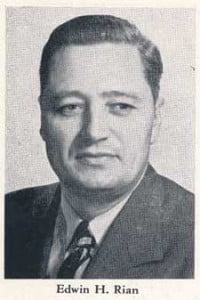
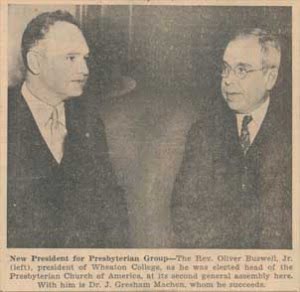
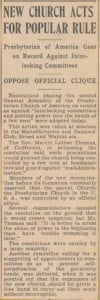
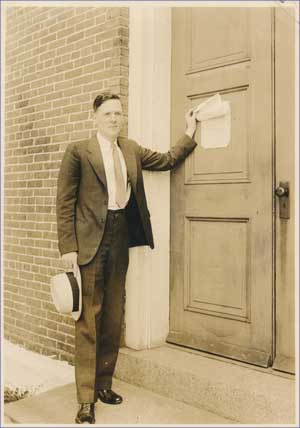 On August 3, 1936, newspapers in and around Wilmington, Delaware ran the following article covering the closure of the Head-of-Christiana Presbyterian Church, where the Rev. Henry G. Welbon was pastor at the time.
On August 3, 1936, newspapers in and around Wilmington, Delaware ran the following article covering the closure of the Head-of-Christiana Presbyterian Church, where the Rev. Henry G. Welbon was pastor at the time. 